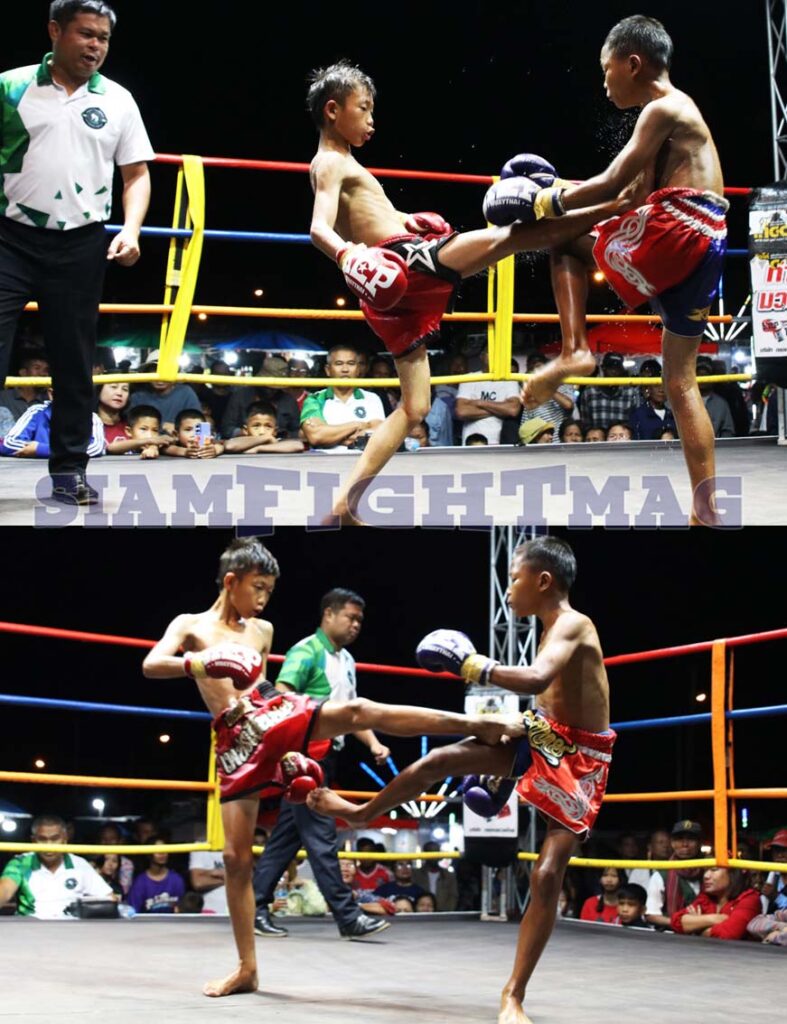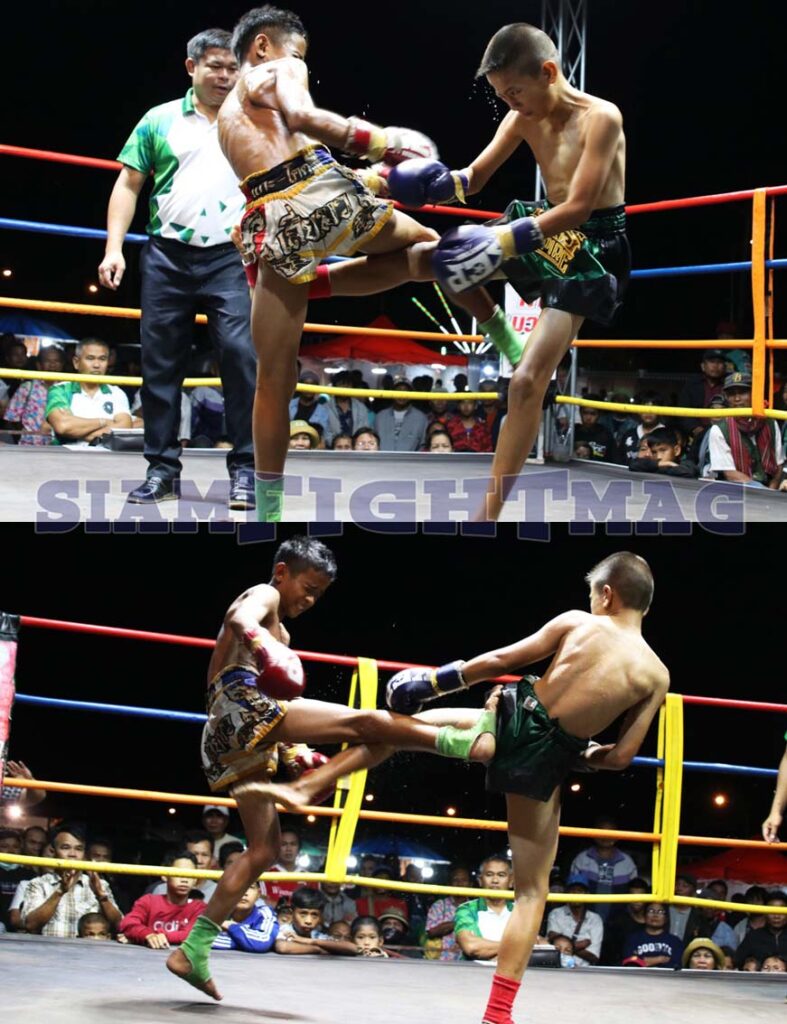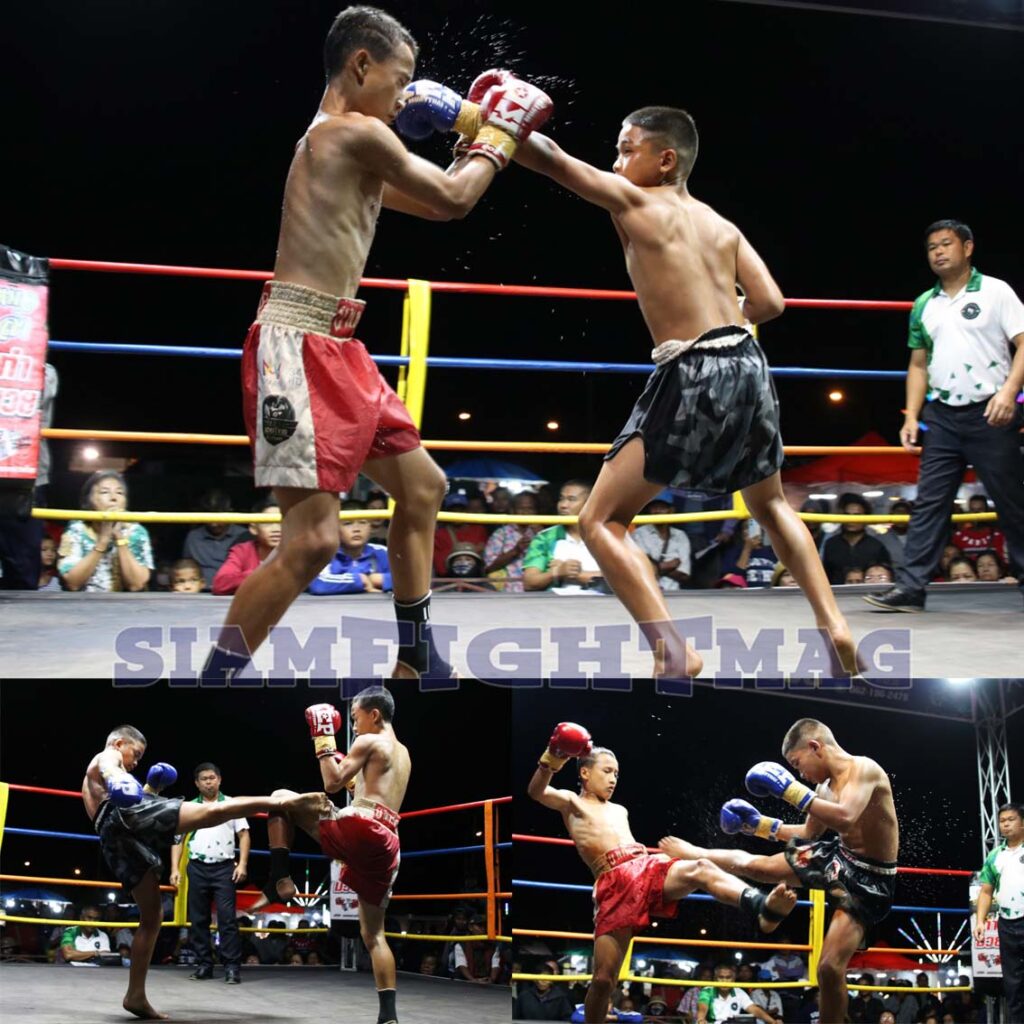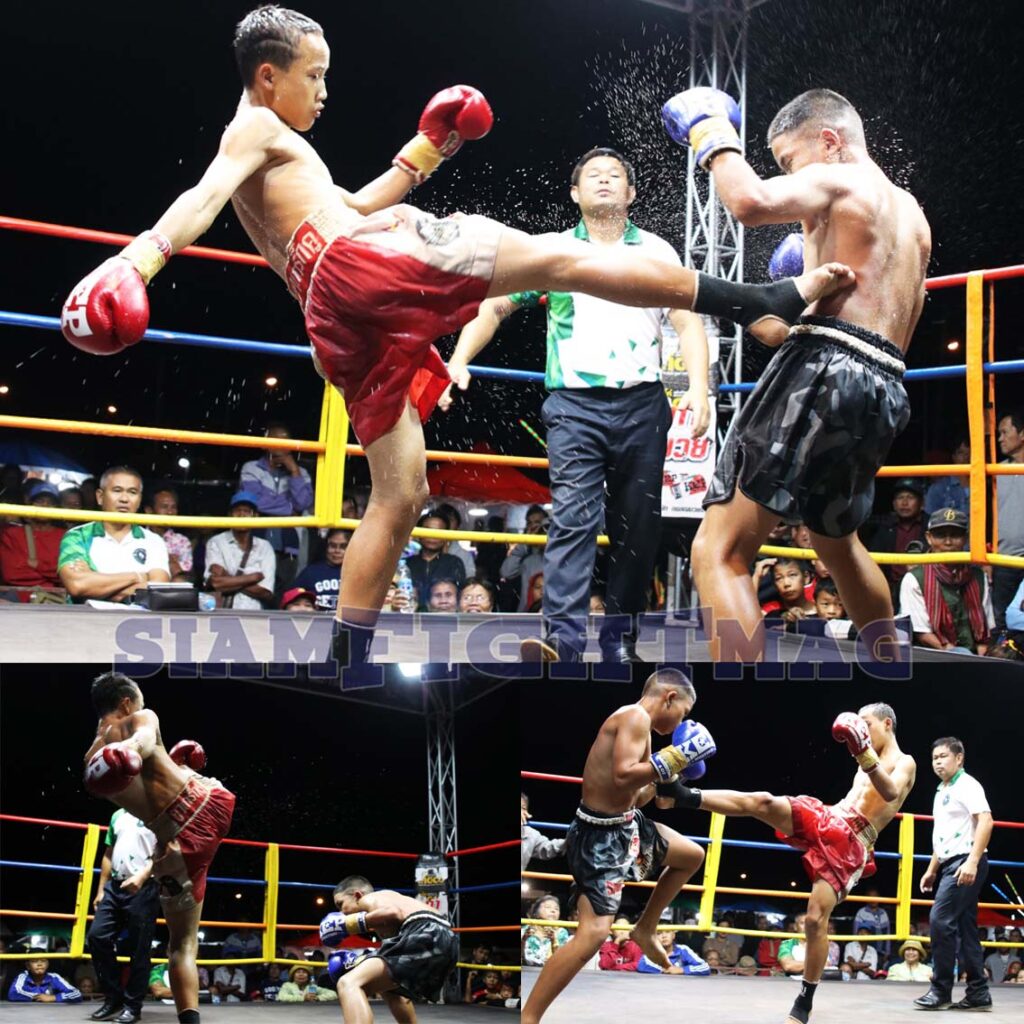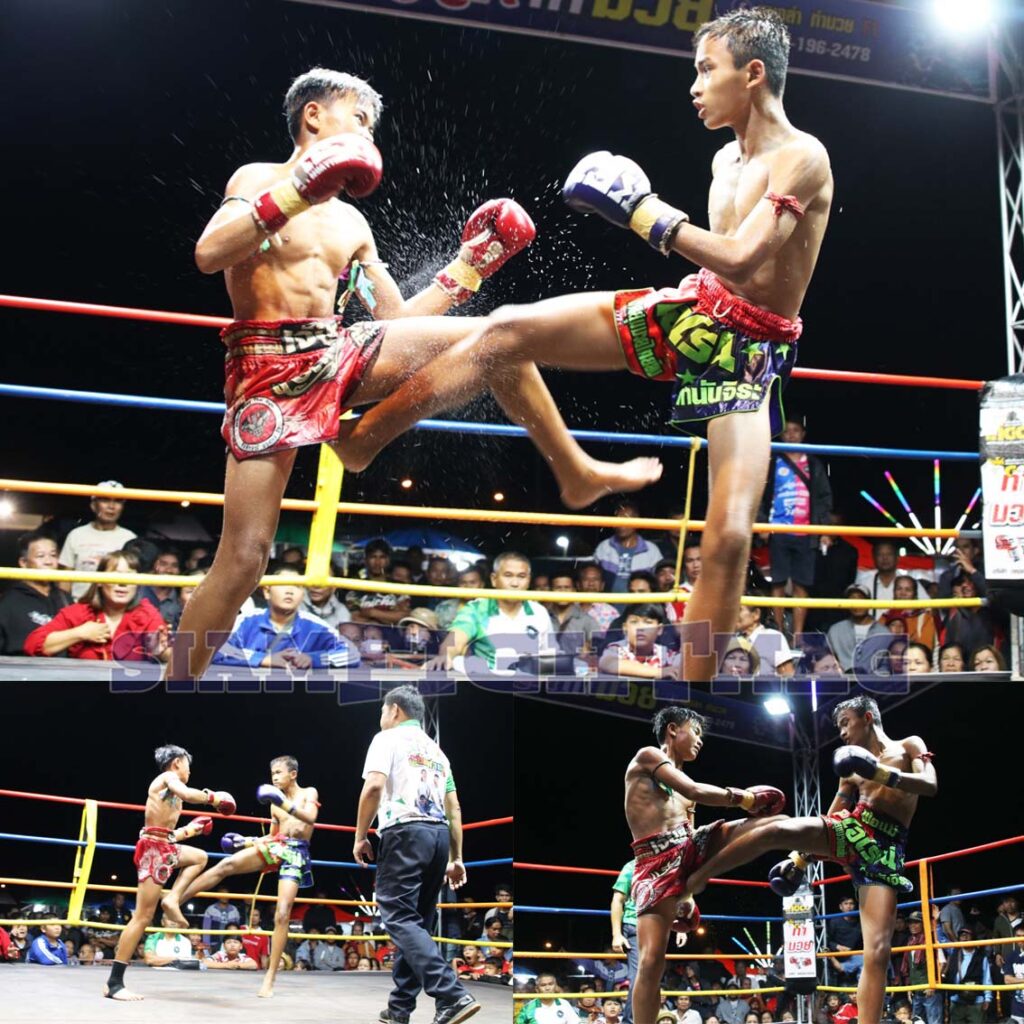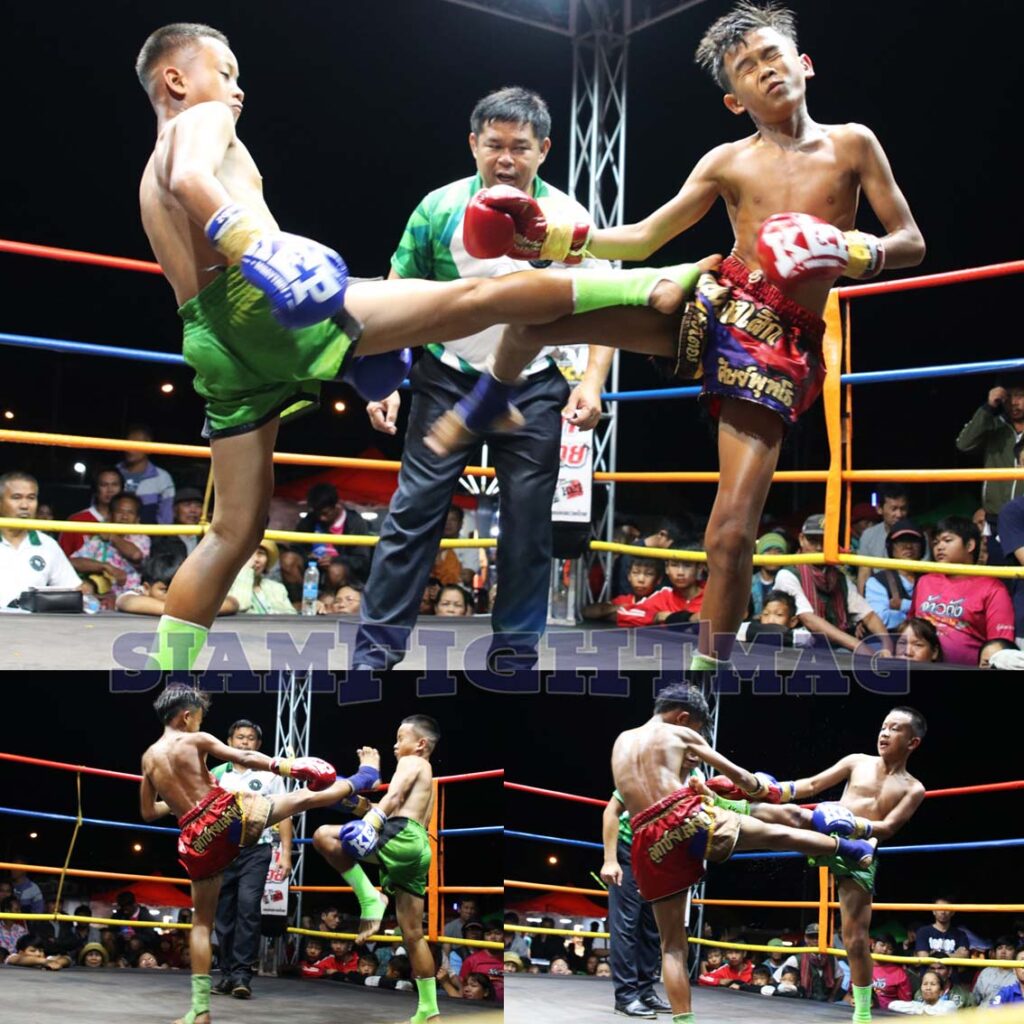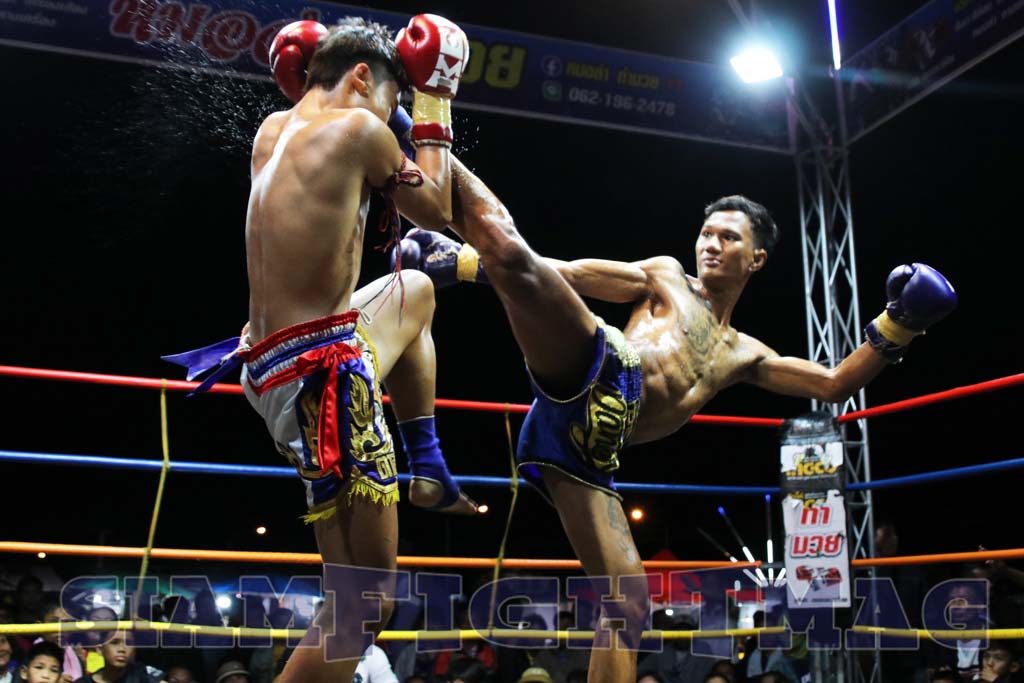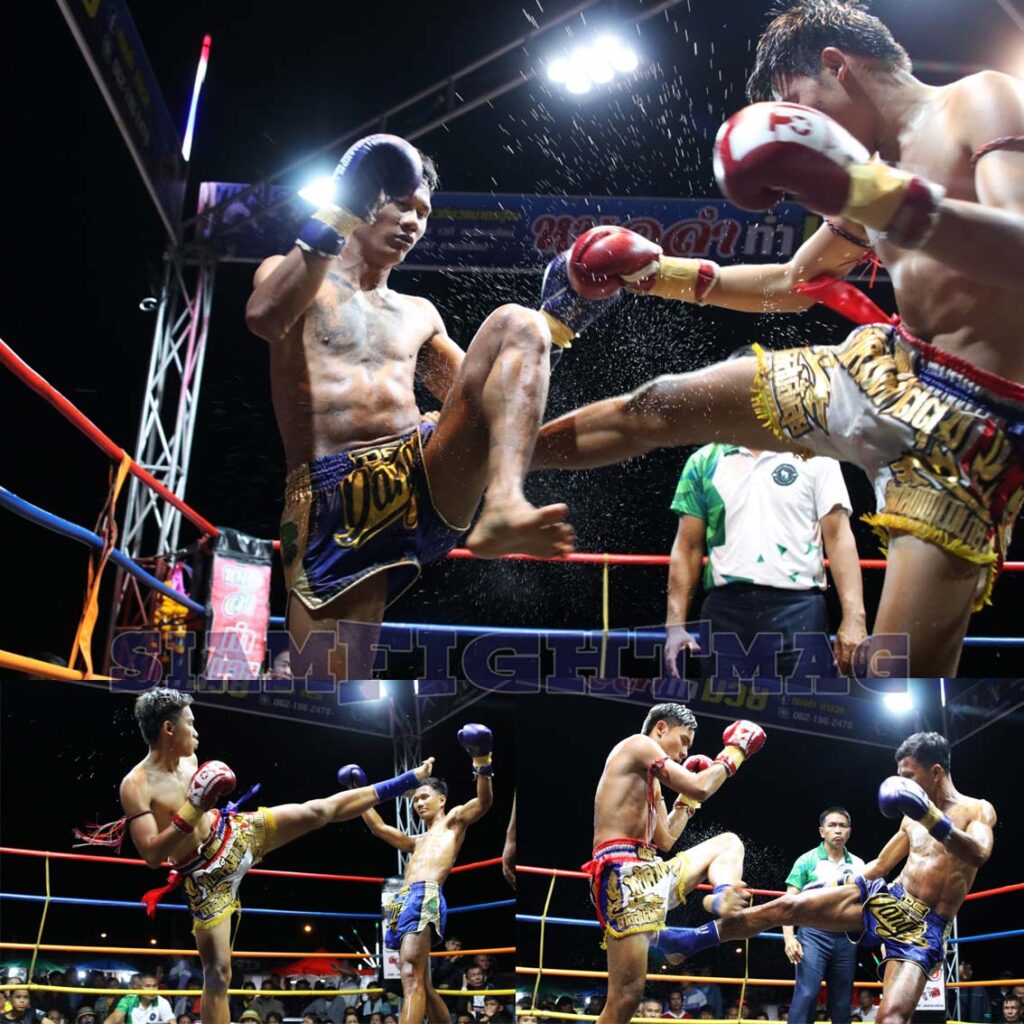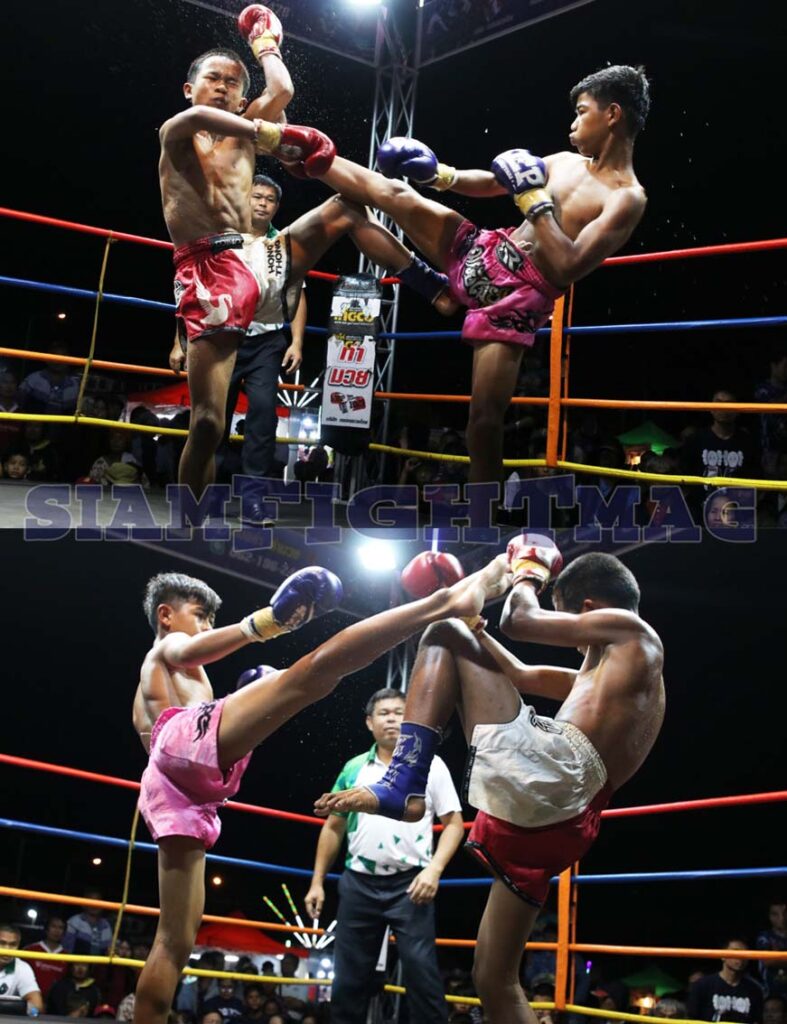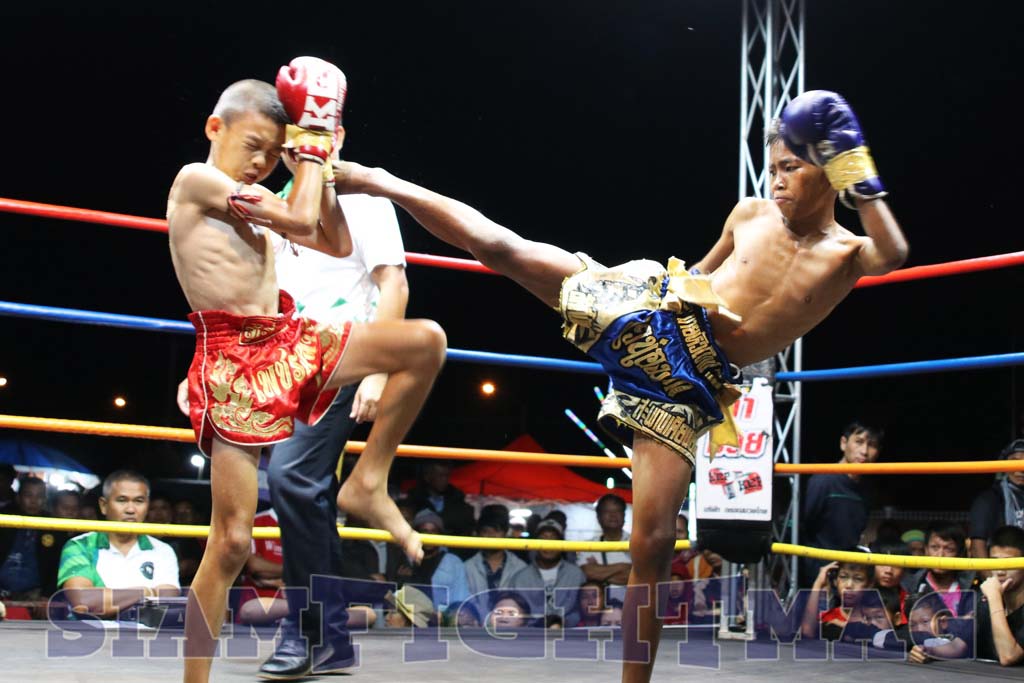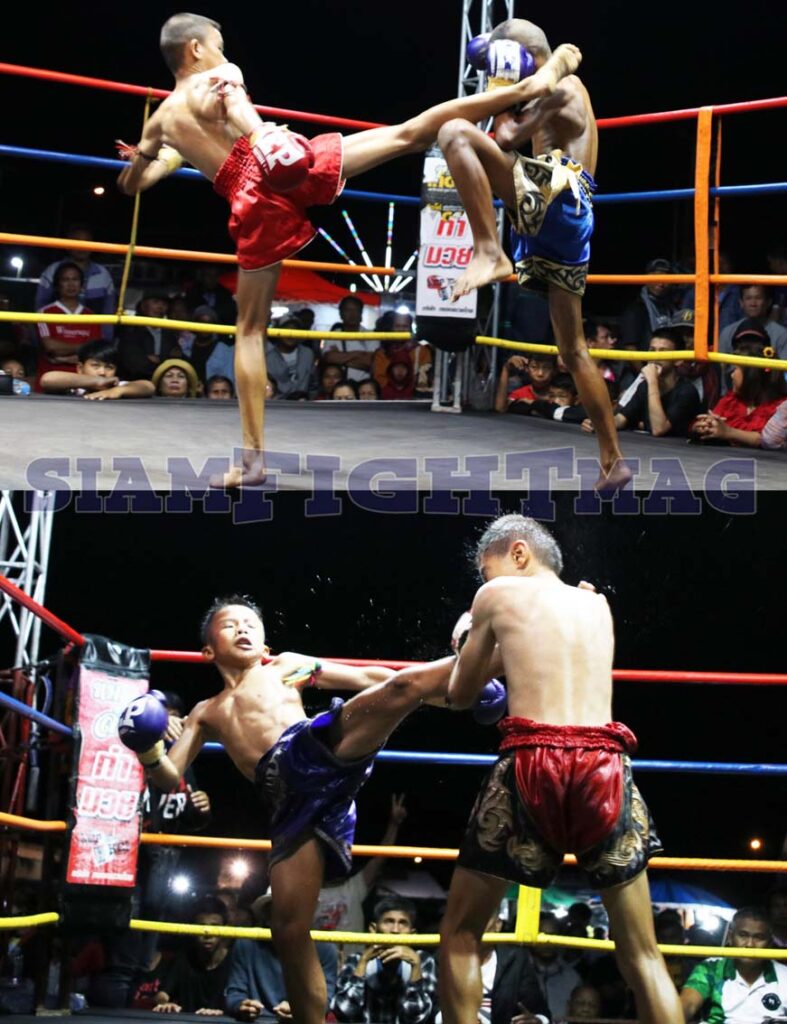THE WARRIORS OF THE TANSUM CONTRYSIDE
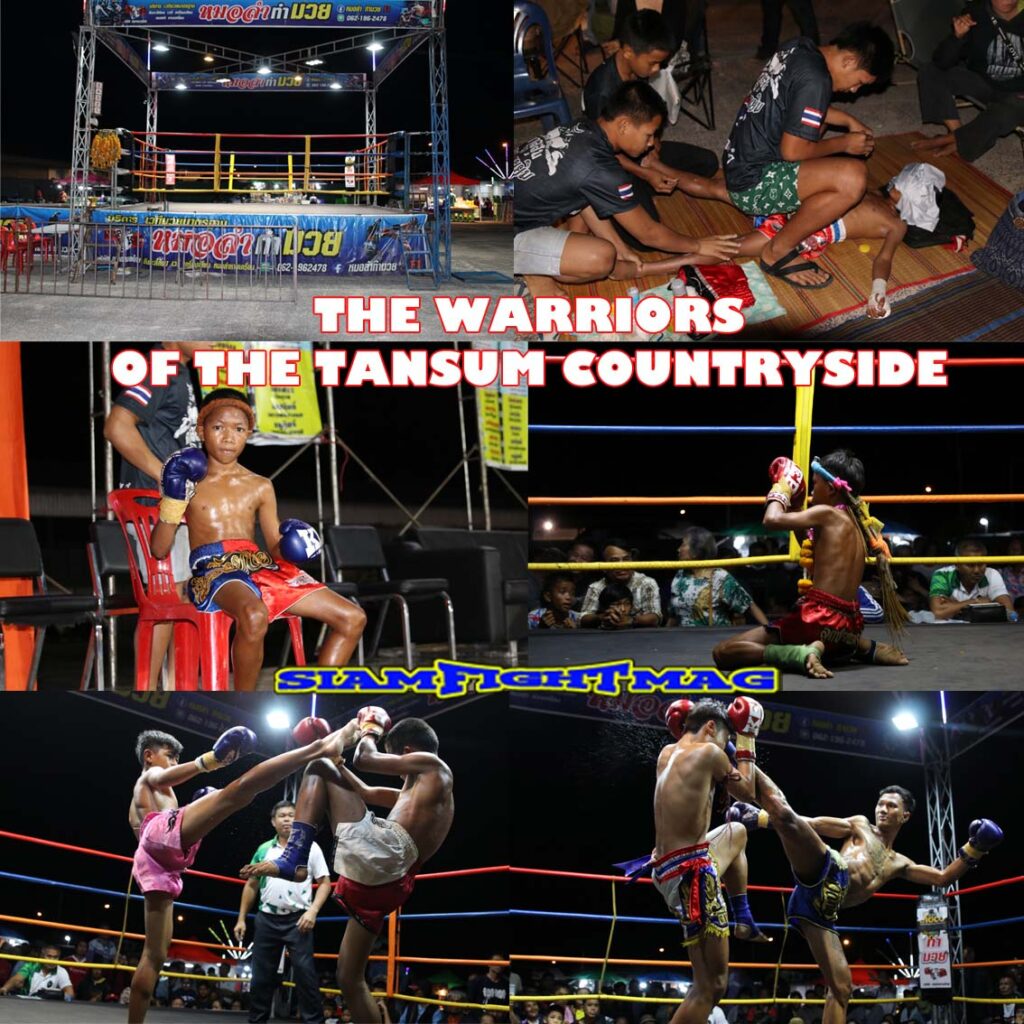
THE WARRIORS OF THE TANSUM CONTRYSIDE
by Serge TREFEU (2025)
As part of the joint fight against drug addiction, the municipality of Tansum village, located in Ubon Ratchathani province, in northeast Thailand, regularly organizes boxing shows. A temporary ring is set up in a large square, lined with metal panels, serving as an open-air stadium.
Around the central ring, street vendors set up their stalls. The atmosphere is bustling: you can find everything there, in abundance. The stalls are overflowing with food, including generous skewers of meat and fish. Makeshift fans, suspended above the dishes, stir the hot air to keep insects away, while the mounds of skewers line up in tasty rows.
Further along, stalls overflow with vibrantly colored exotic fruits, whetting the appetites of passersby. Some vendors even offer cooked insects—a local specialty much appreciated by locals.
There are also unusual stalls selling multicolored fighting fish, enclosed in simple glasses of water, lined up on tables. Nearby, rabbits and chickens are displayed in cages, arousing the curiosity of children.
The atmosphere takes on the feel of a funfair: shooting ranges attract precision enthusiasts, while duck-catching games amuse the youngest. Giant trampolines bounce to the laughter of excited children.
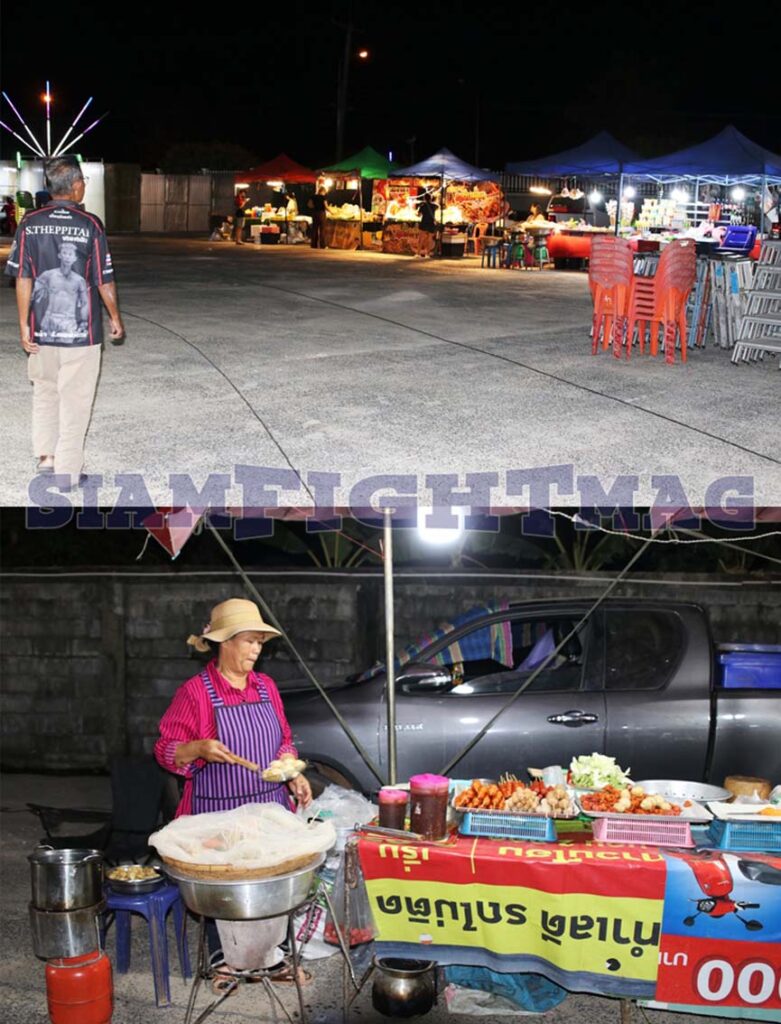
These Muay Thai shows, held in the Thai countryside, are not just sporting events. They are true village festivals, drawing large and enthusiastic crowds. Families, young people, and old alike gather in this joyful and boisterous atmosphere, where sport, culture, and tradition blend together in a unique, vibrant atmosphere.
Admission to the boxing matches is only 140 baht. At the ticket counter, manned by two smiling young women, a police officer from the town of Tansum checks tickets and directs the queue of spectators.
Families flock from all over Ubon Ratchathani province, some from very far away. They arrive in overloaded pickup trucks or on scooters, often several on a single vehicle.
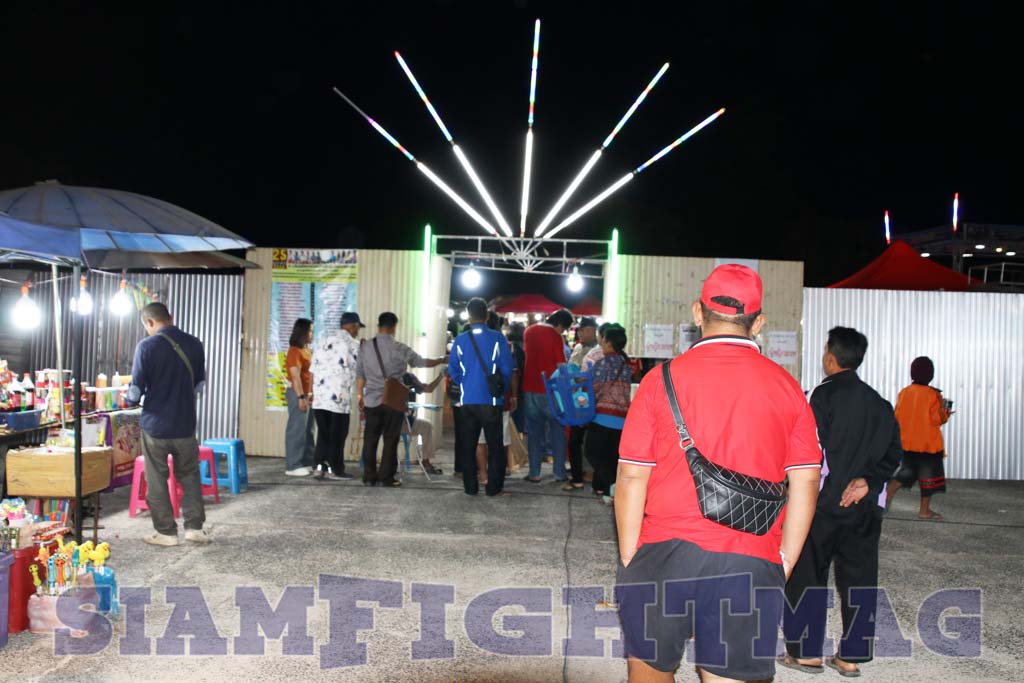
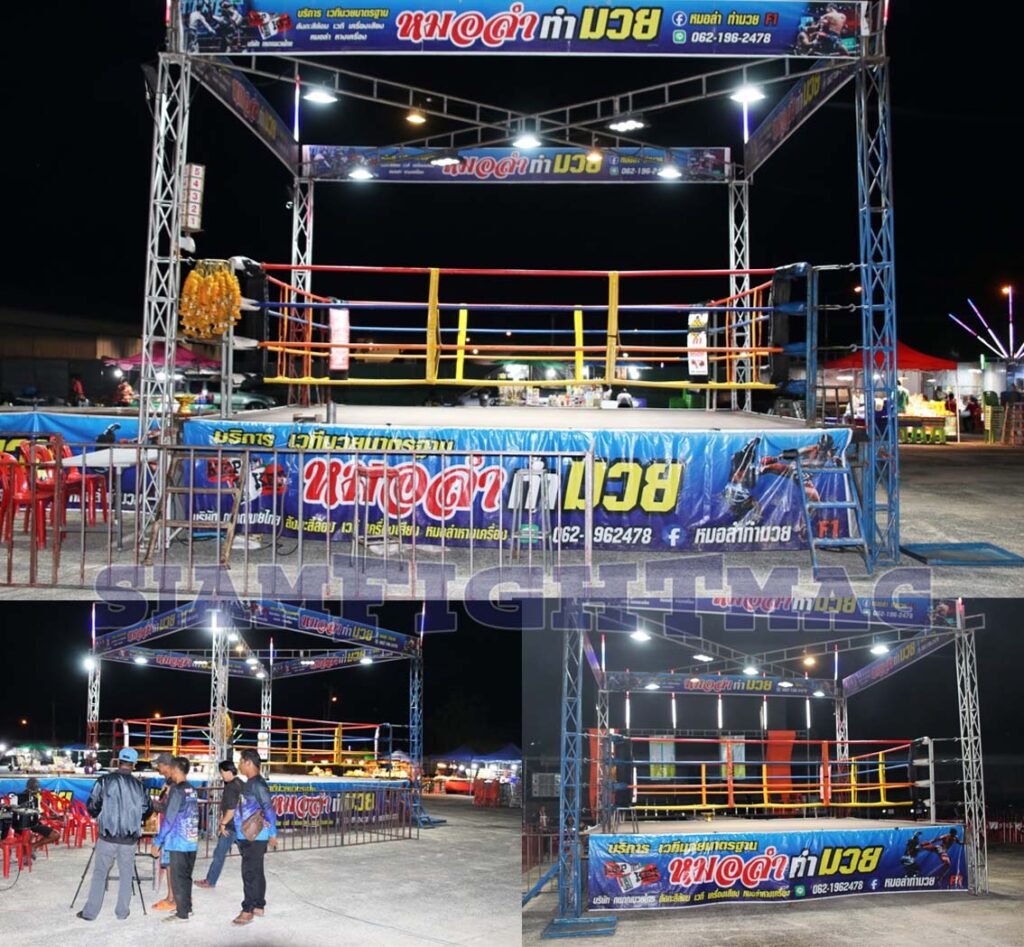
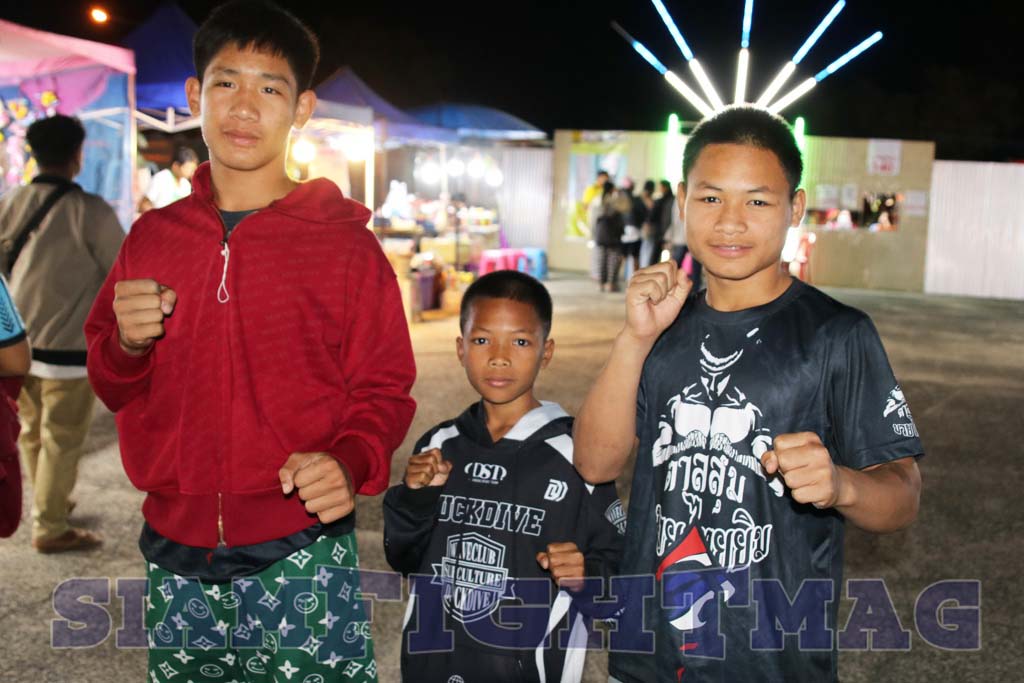
Around the ring, there are no stands or seats for the public, except for a small VIP area equipped with a dozen tables and chairs. The other spectators simply sit on the floor, on mats they carefully unroll.
Before the fighting begins, a local orchestra will liven up the stage with traditional pieces from Isaan, a northeastern region rich in folkloric sounds. The musicians will provide rhythm throughout the evening with their traditional instruments, creating a warm and festive atmosphere.
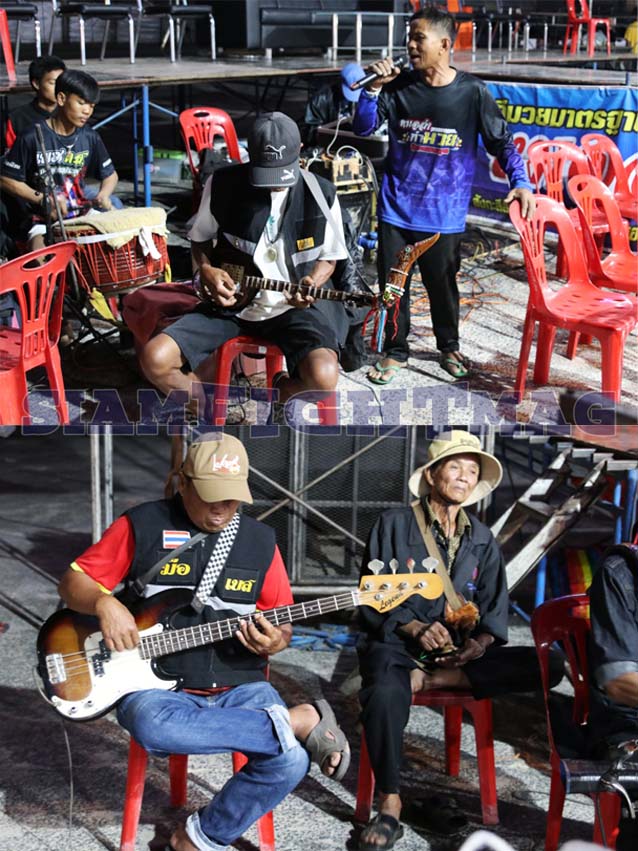
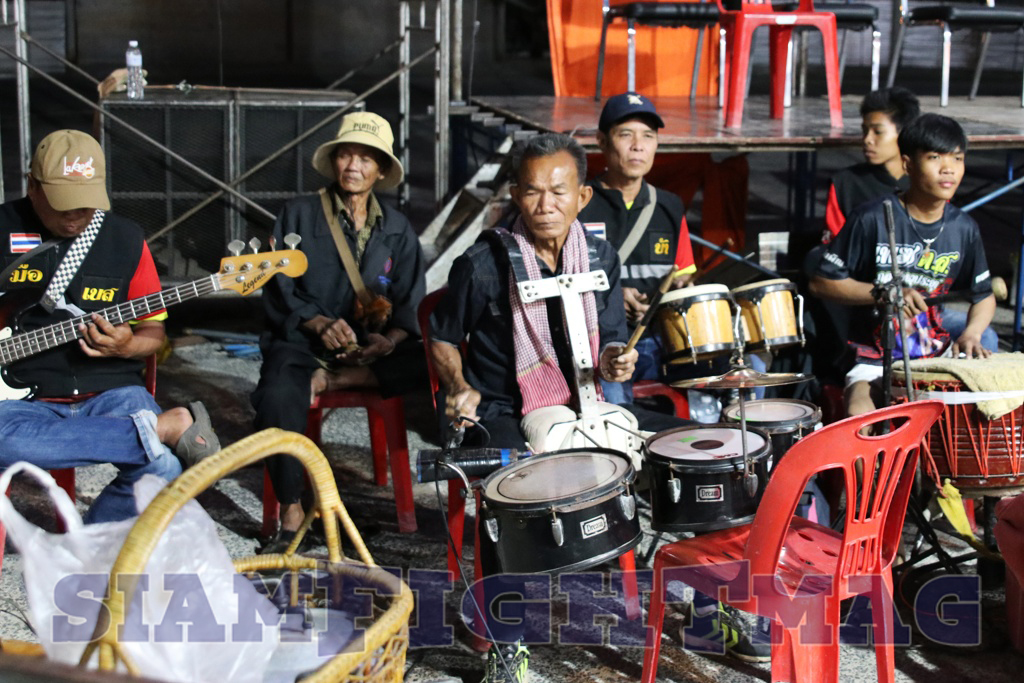
Sitting in a circle on their mats, parents, siblings, and friends bustle around the young boxers on their team. All the equipment is spread out before them: hand wraps, rolls of tape, Naman Muay heating oil, and fight shorts.
In a corner, carefully placed, are the most sacred objects: the Prajead—a lucky bracelet—and the Mongkol, the traditional headband worn on the head. For Nak Muay, the head is the most vulnerable part of the body, and the Mongkol is supposed to symbolically protect it upon entering the ring.
The boxers, most of them still young, have their hands bandaged and vigorously massaged with heated oil. All this takes place under the curious gaze of spectators, who pass by, enjoying a skewer or sipping a cold drink, in an atmosphere that is both intimate and electric.
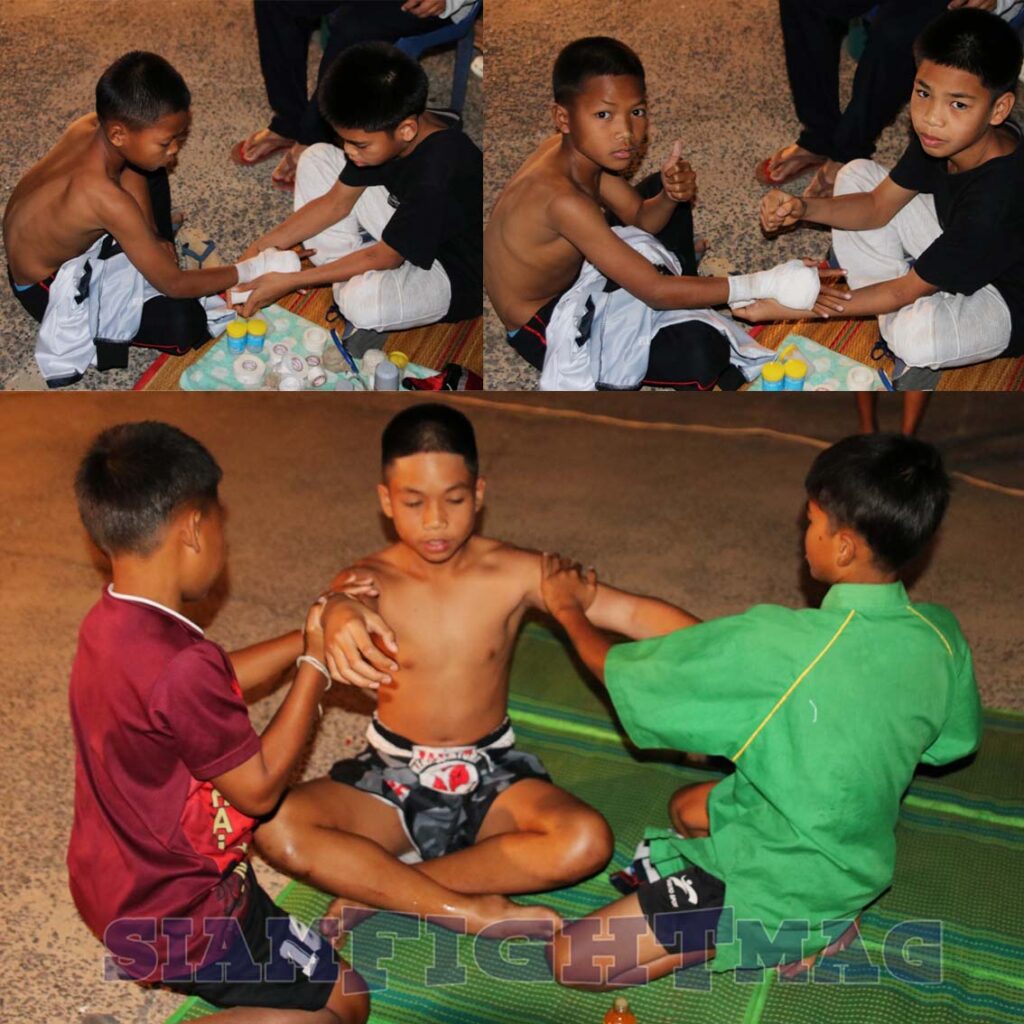
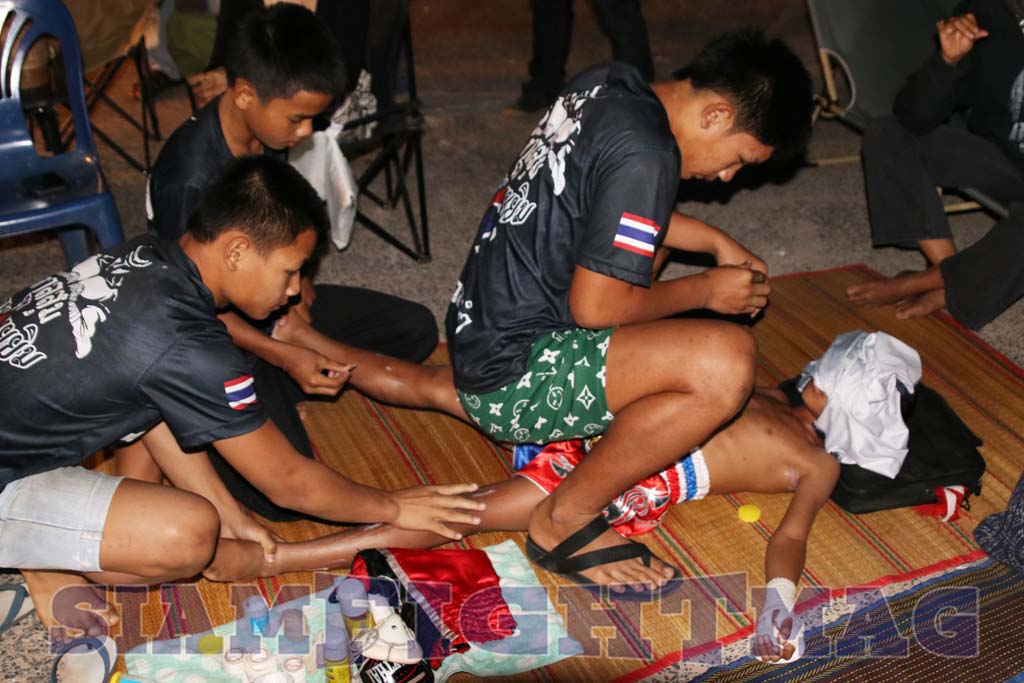
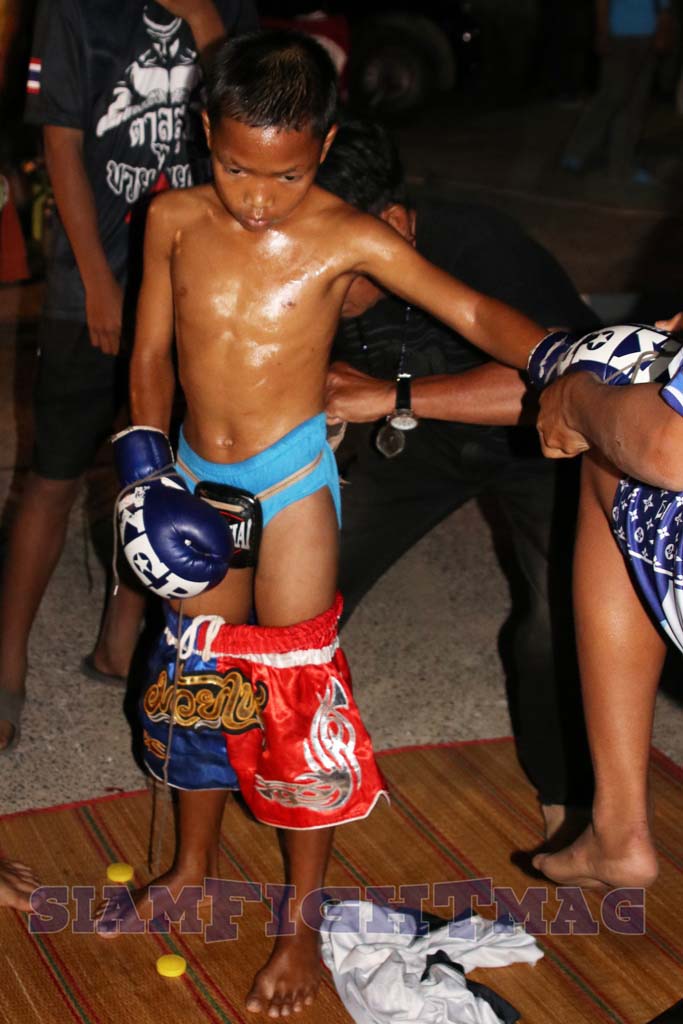
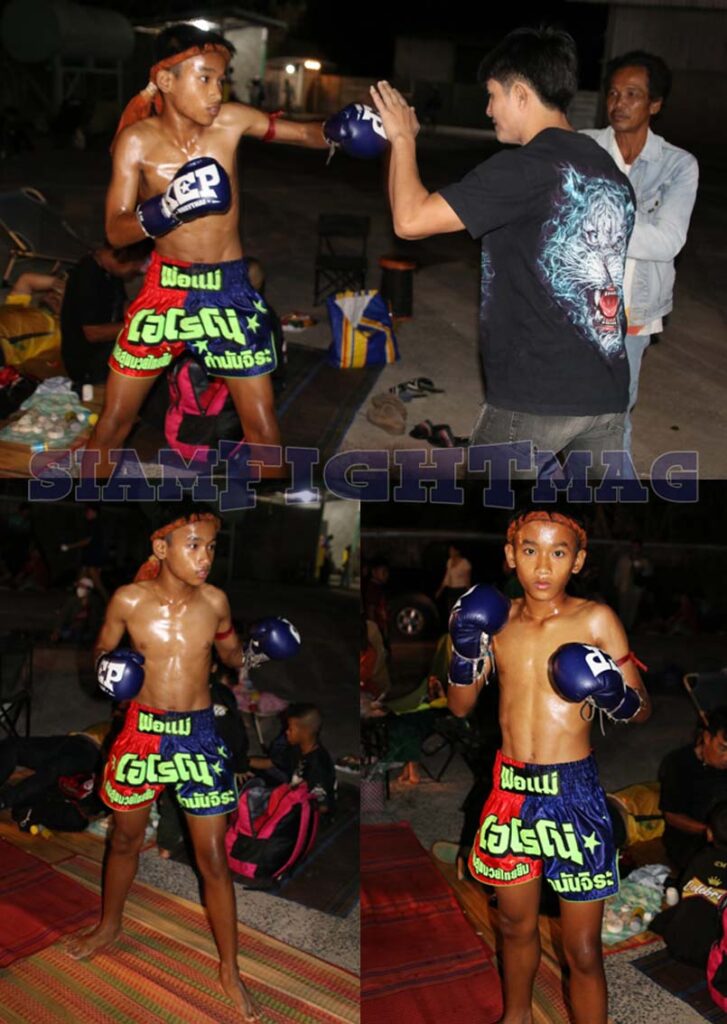
The punters, key figures at these evenings, travel from team to team to glean information. They inquire about the young boxers’ fitness, ask about injuries, rumors, and their latest training sessions.
Discussions quickly escalate: people compare, debate, and try to guess who will make the most money. Names circulate, and odds adjust in people’s minds. The atmosphere becomes tense when opinions diverge—the exchanges then become heated, sometimes noisy.
Many of these punters rent simple iron stepladders that allow them to rise above the crowd. Standing on these makeshift perches, they can shout and bet frantically, scanning the ring with a sharp eye.
Here, there are no digital scales like in the big arenas of Bangkok. The weigh-in is rudimentary. The two opponents are simply placed side by side. The organizers assess them visually: height, build, musculature. If one seems a little heavier, it doesn’t matter. In any case, the fights are decided in advance, and everyone knows the boxers’ approximate weight. A difference of one or two kilos? It’s just a detail. The match will take place no matter what.
The show’s poster announces no fewer than 26 fights. The first bell is scheduled for around 9 p.m., and the evening will stretch well past midnight.
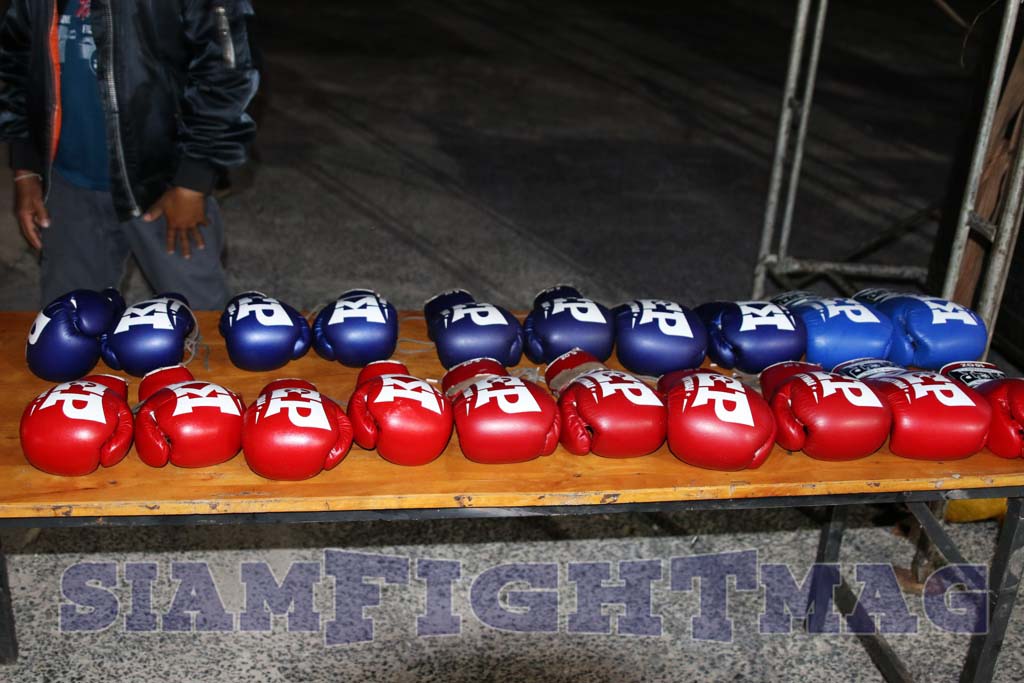
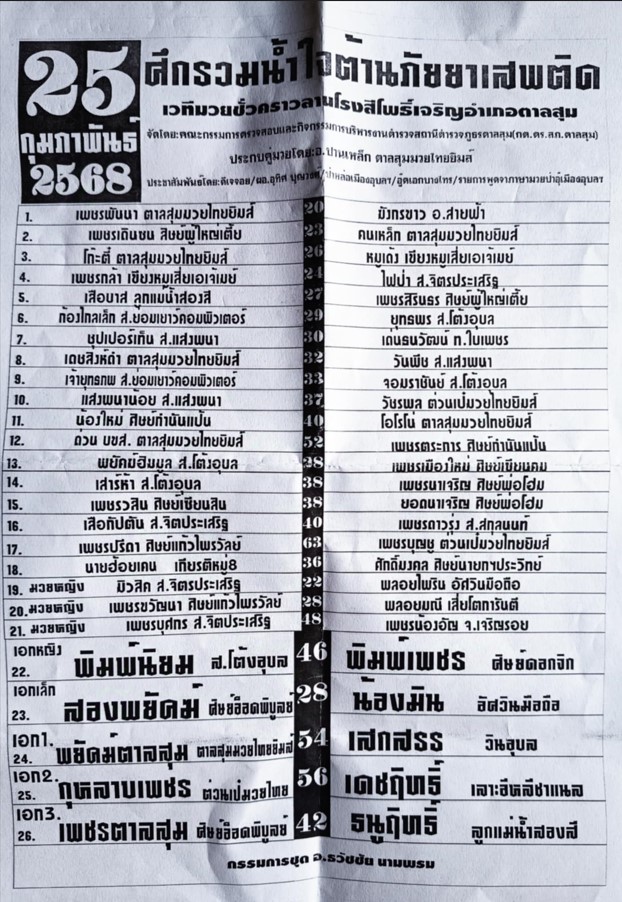
Children will lead the way, competing in three-minute rounds. Teenagers and a few adults will fight for five rounds, according to traditional Muay Thai rules. The number of young participants far outnumbers the number of adult fighters.
Around the ring, the officials take their places: referees, judges, and members of the organization are methodically setting up their positions. The announcer, also the evening’s host, ramps up the excitement. He harangues the crowd, jokes with the regulars, and prepares them for the excitement to come. The atmosphere heats up, the spectators are getting excited: the fights are about to begin.
But before that, a solemn moment is in order. The show’s promoter, accompanied by the event’s many sponsors, enters the ring. Together, they greet the audience, express their gratitude, and wish everyone a wonderful evening.
Then, silence falls. The Thai national anthem blares over the loudspeakers. Immediately, the entire crowd rises, their faces serious, their hands at attention. Here, respect for institutions is not an option—it’s a sacred rule that no one deviates from.
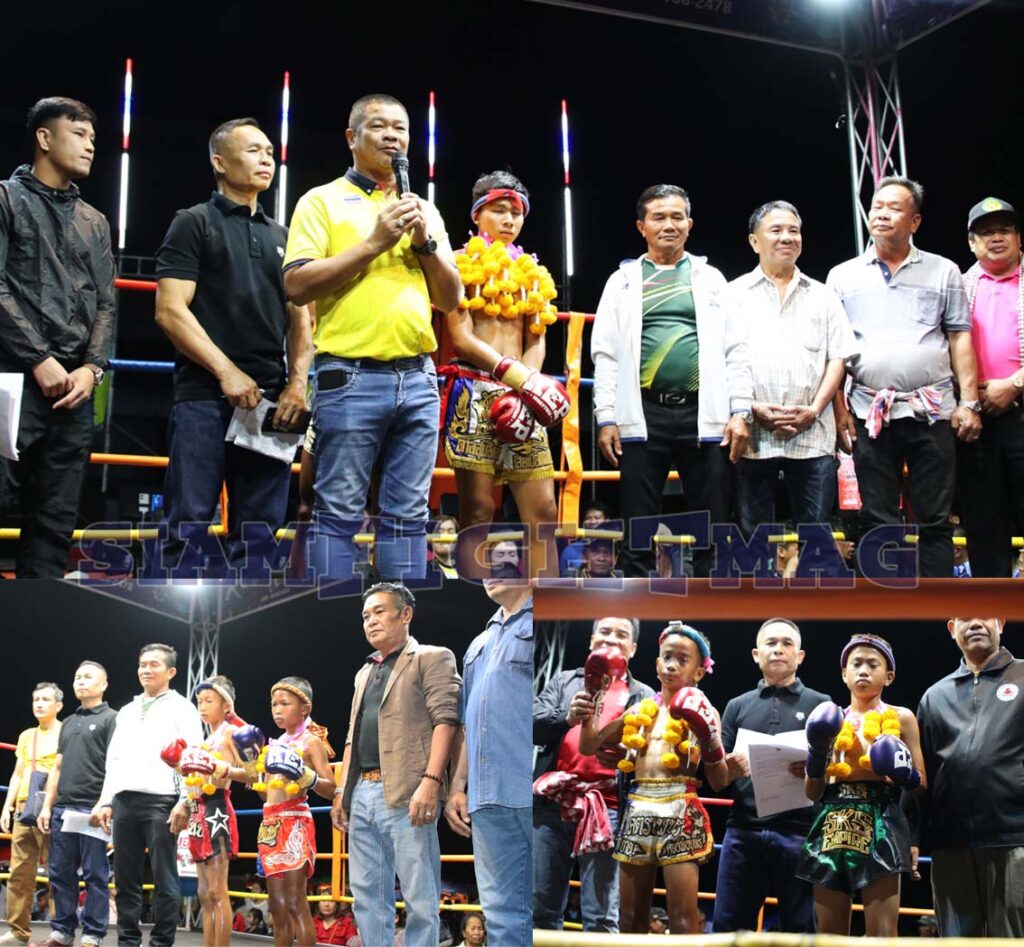
The boxers enter the stage, facing the central ring, crossing the stage to the rhythm of grandiose music, worthy of the greatest shows in Bangkok. Sometimes, the iconic anthem of the famous Thai Fight tournament accompanies their arrival, adding a solemn and spectacular touch to the moment.
Before each bout, the fighters wait their turn, seated on a simple plastic chair positioned at the side of the raised platform. Their bodies are coated with heated oil, making their muscles shine brightly under the harsh glare of the powerful spotlights.
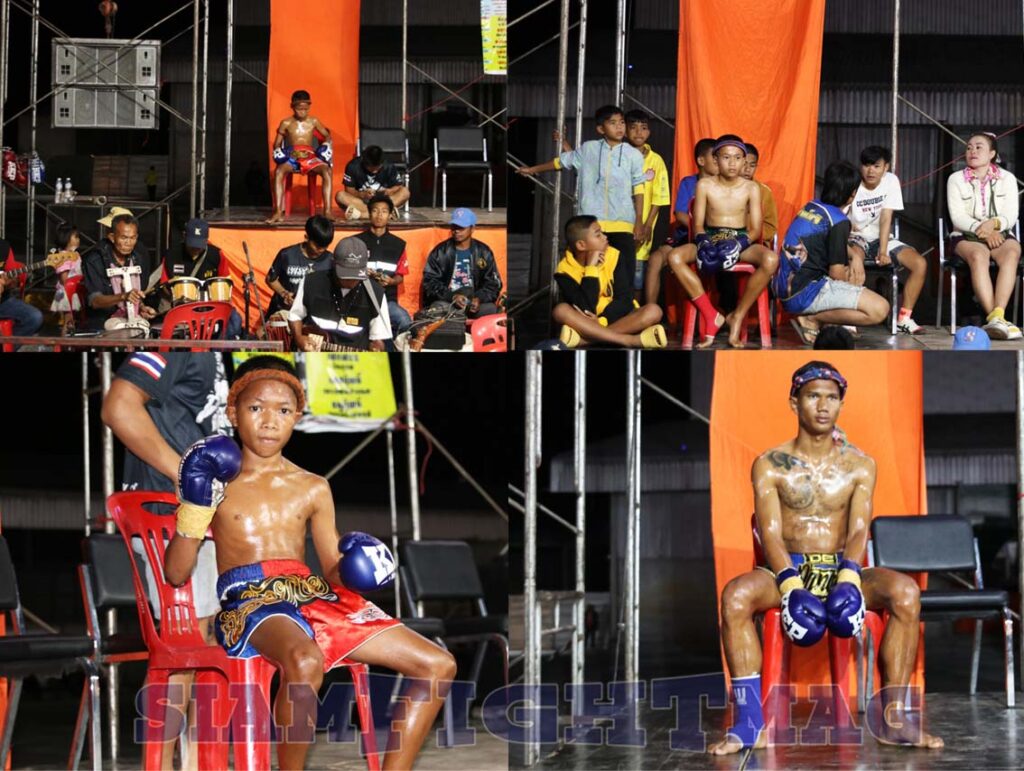
The battles between these young ring warriors are intense. Some are just starting out, with only a few fights under their belts, while others, more seasoned, already have over fifty fights under their belts. Each of them enters the ring with the same goal: to give it their all. Because here, they fight in front of their entire families, who come out in force to support them—and there’s no question of disappointing.
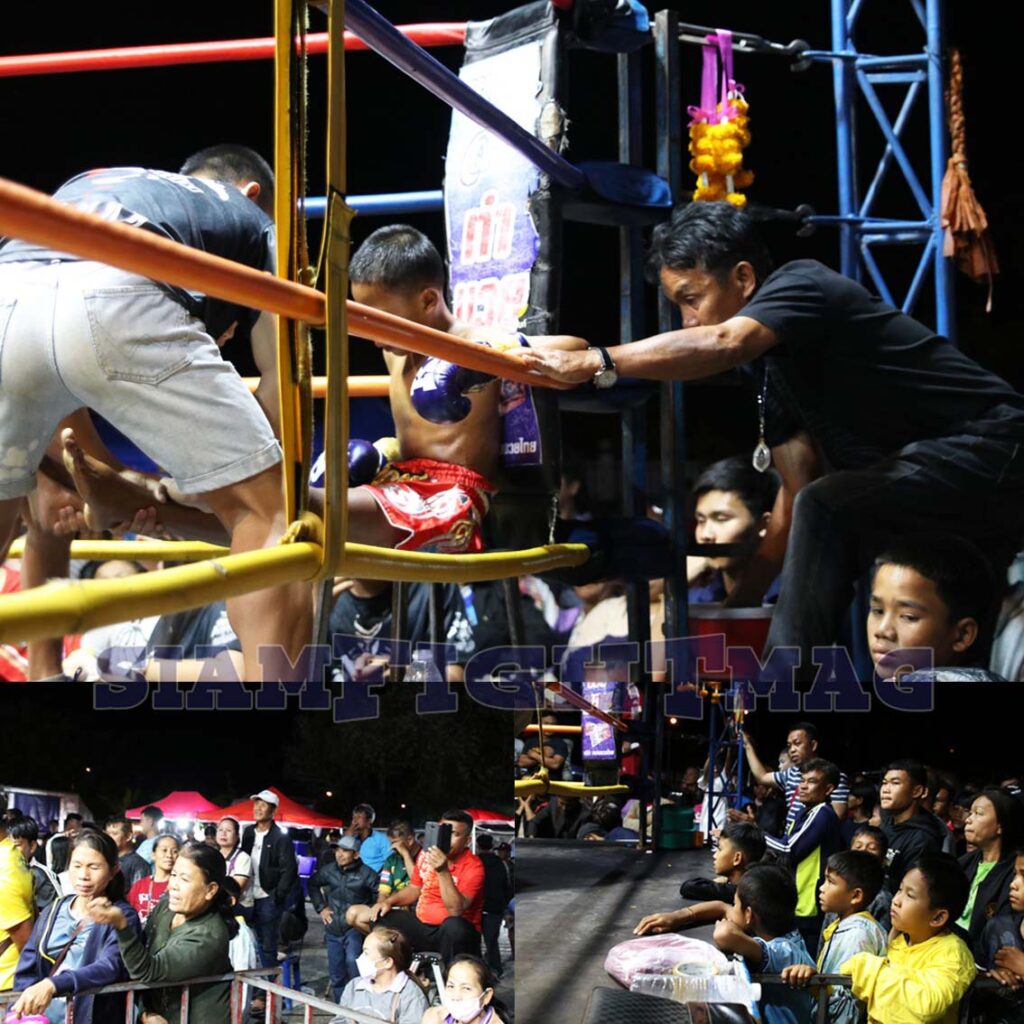
In the end, what matters most is that you fought a good fight. Winning is a wonderful reward, but losing with honor is just as noble.
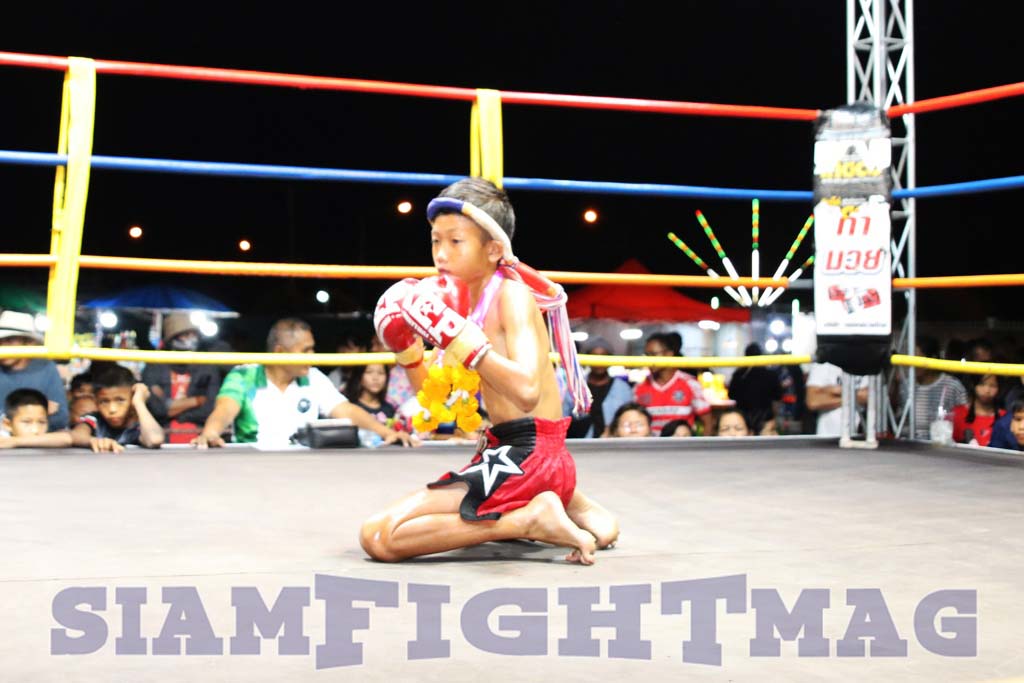
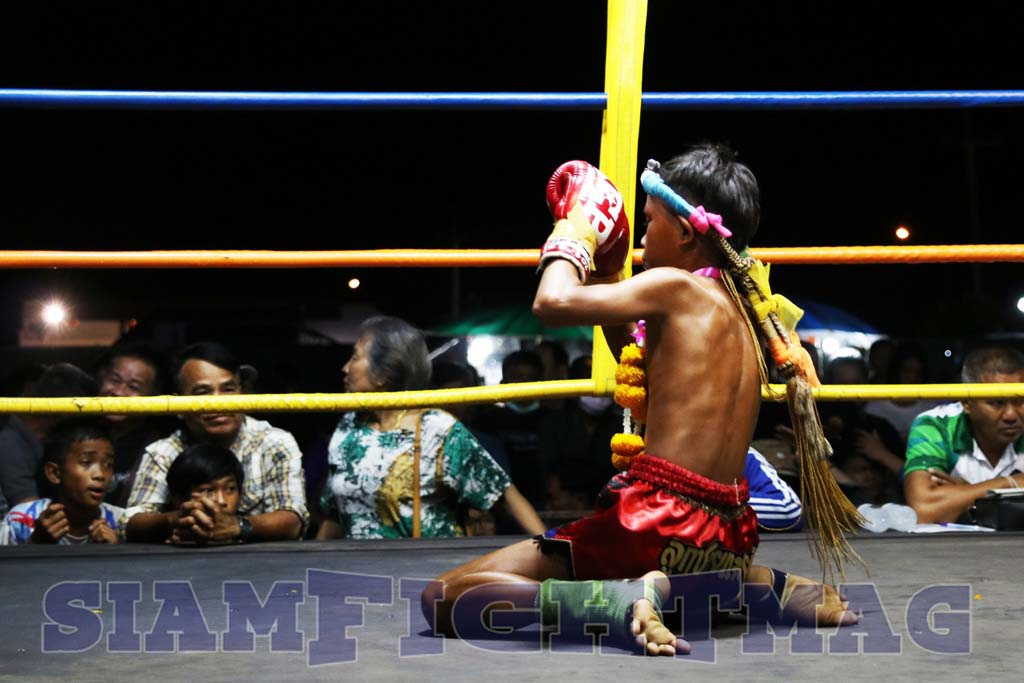
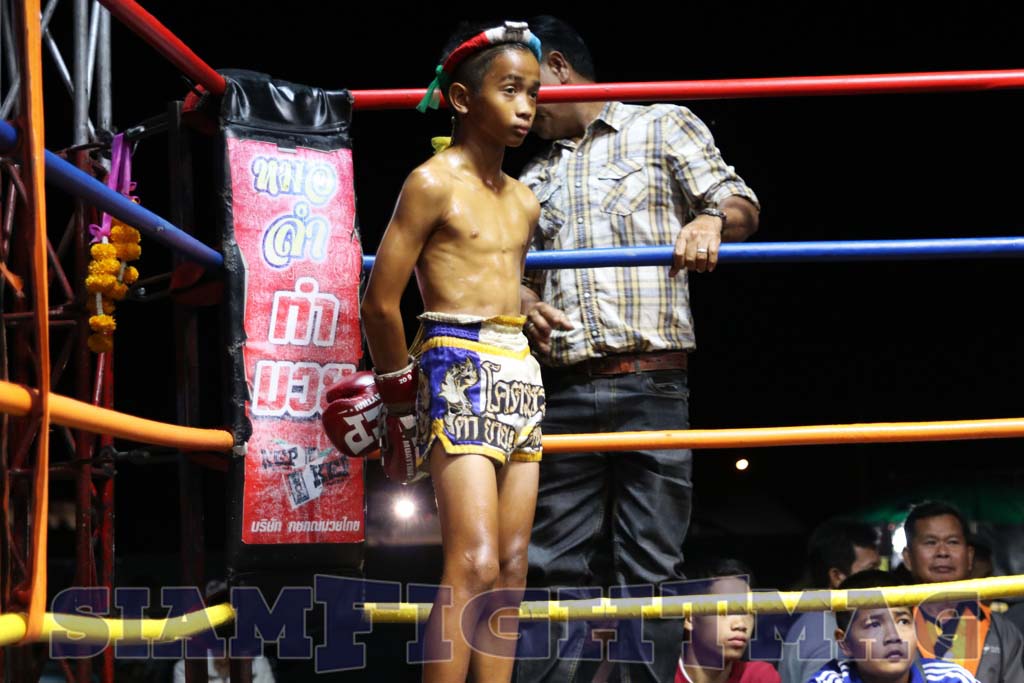
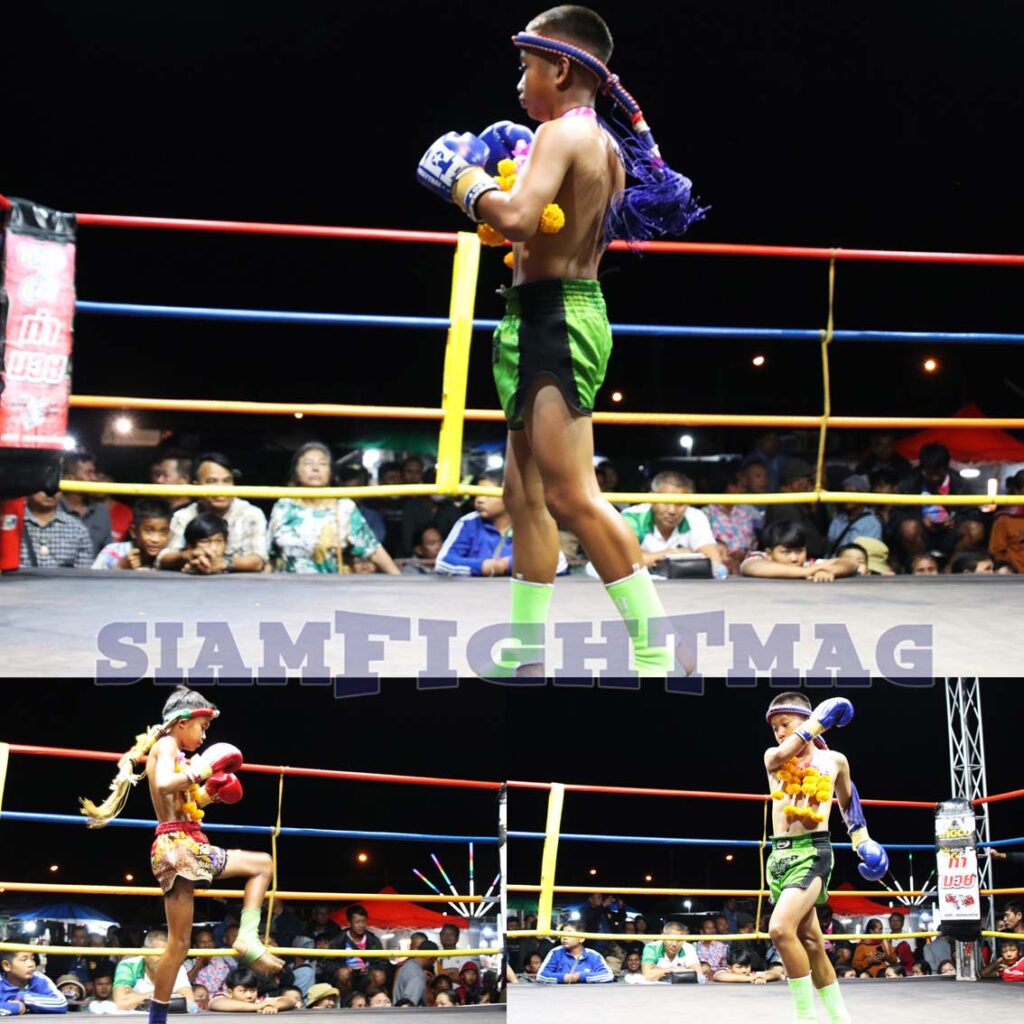
Gamblers urge on the young warriors from ringside, shouting, gesticulating, and betting fervently. Some fighters, who put on a great match and earned their fans a handsome sum, may receive an unexpected reward: a wad of bills shoved directly into their mouths, or better yet, a sumptuous gold chain around their necks, as a token of esteem and admiration.
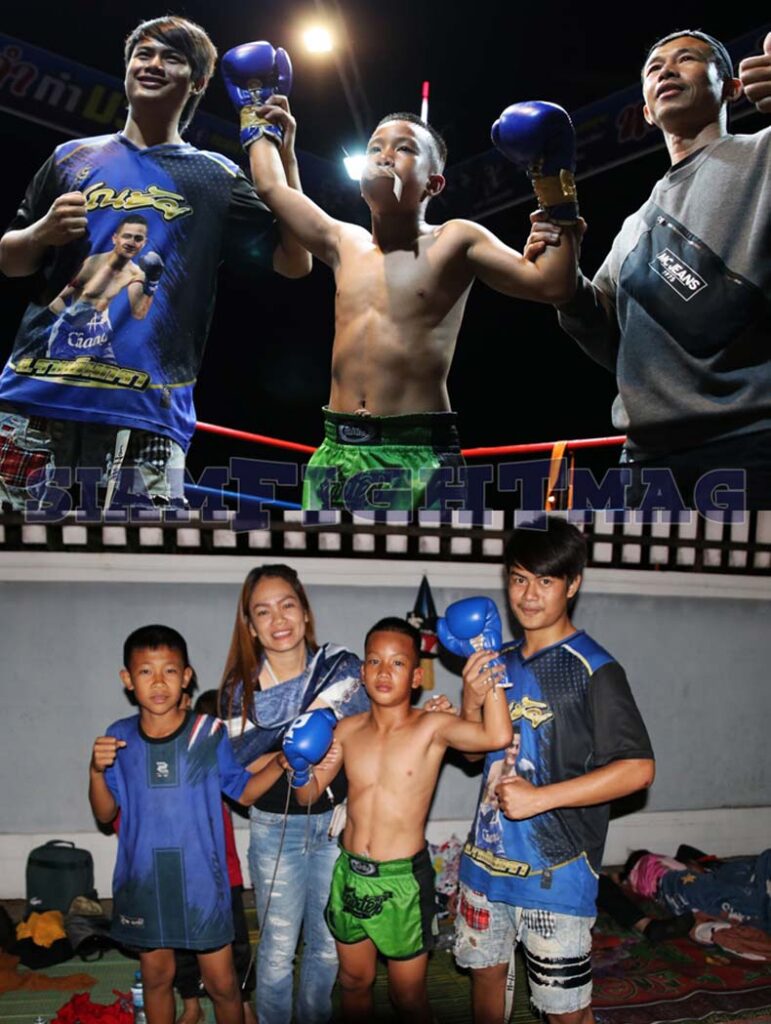
In the ring, all styles clash in a pure and authentic Muay Thai style. Muay Khao, focused on powerful knees, Muay Mat, specialized in punches, and Fimeuu, a technical and tactical style, all collide and counter each other in balanced, suspenseful fights that electrify the audience.
Women’s fights, while present, remain rare here, unlike in the capital. Of the 26 fights held during the evening, only two feature female fighters.
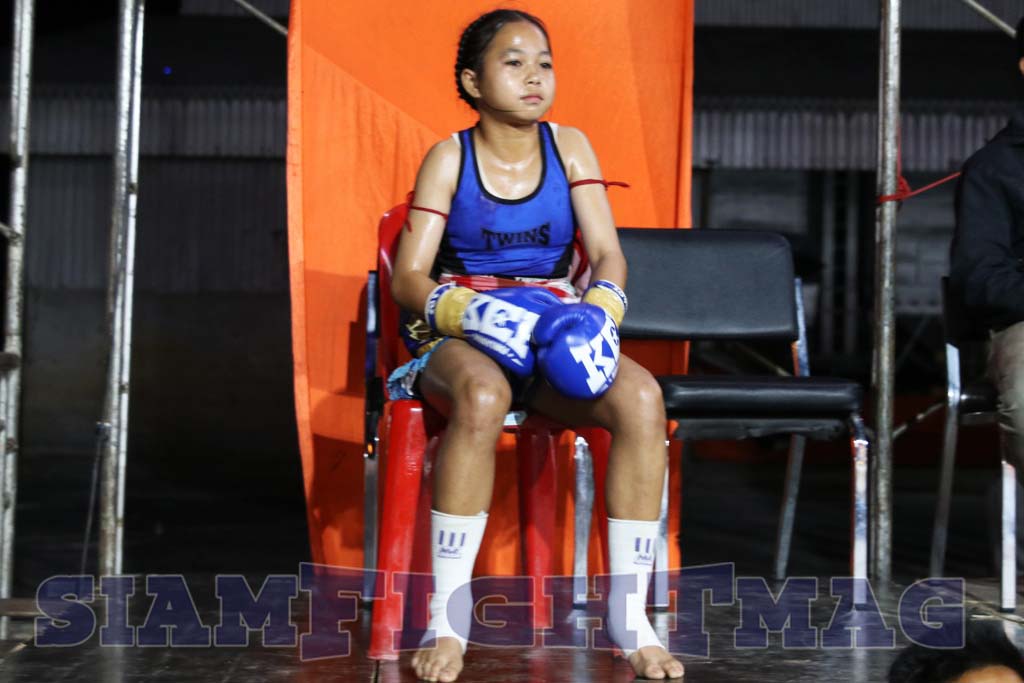
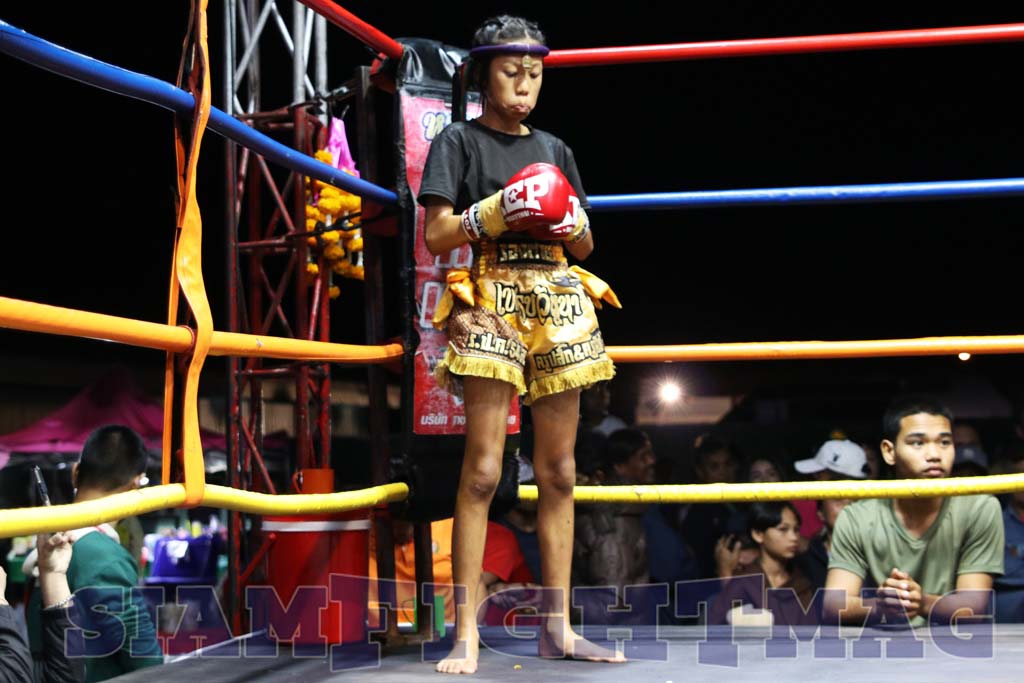
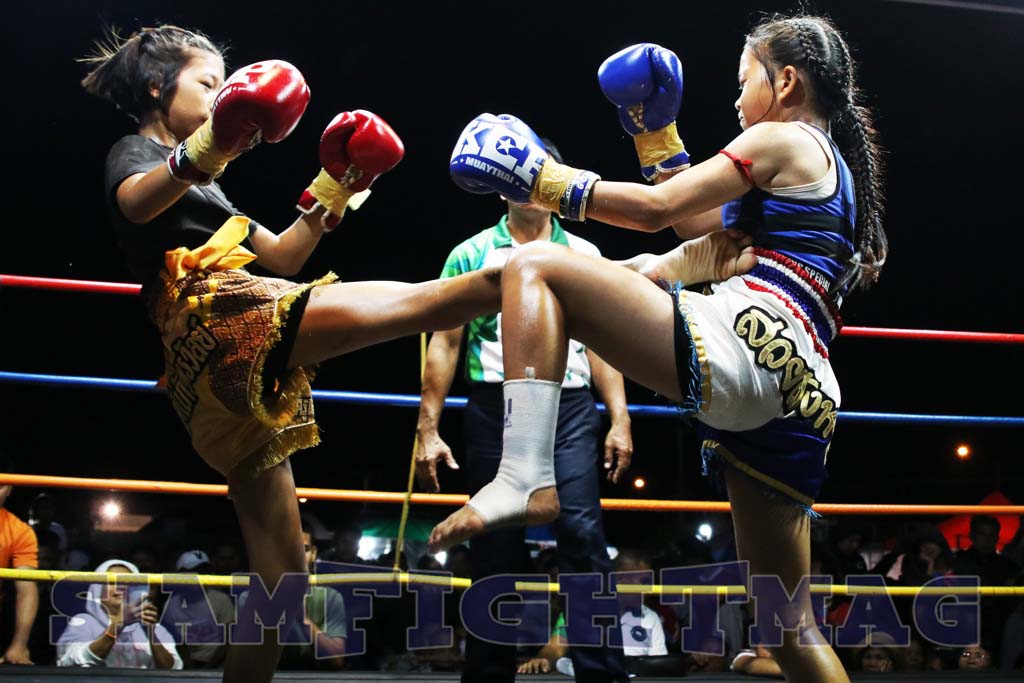
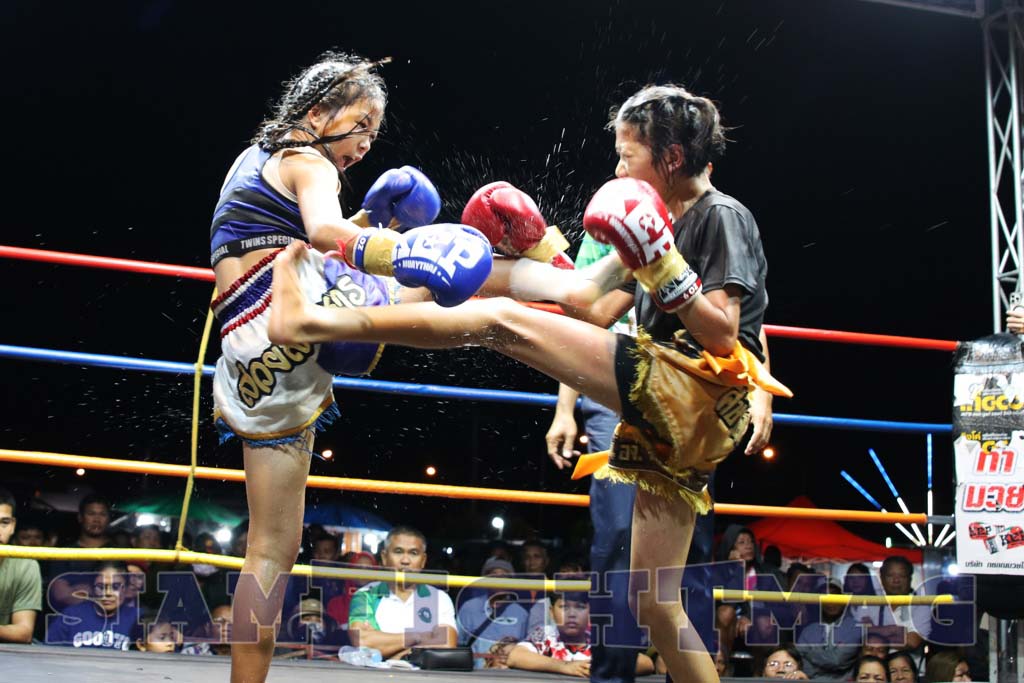
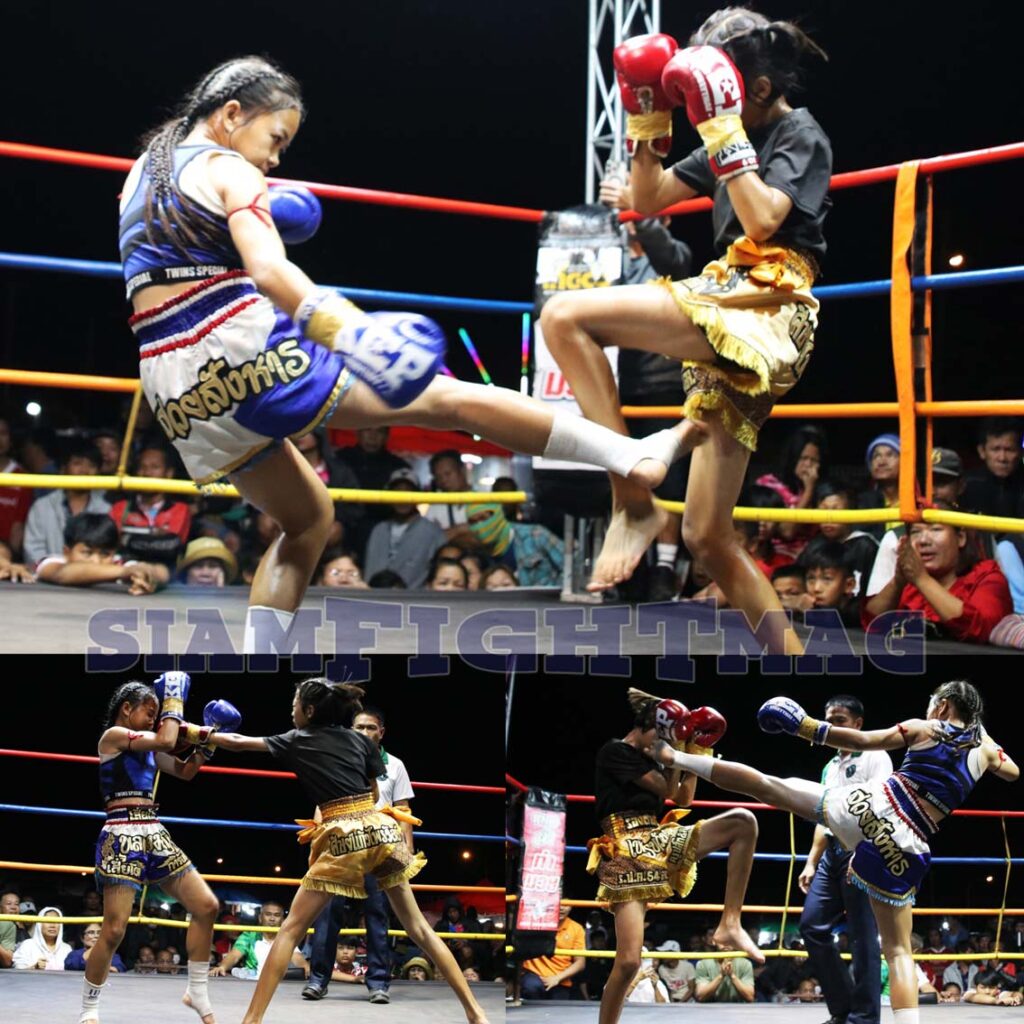
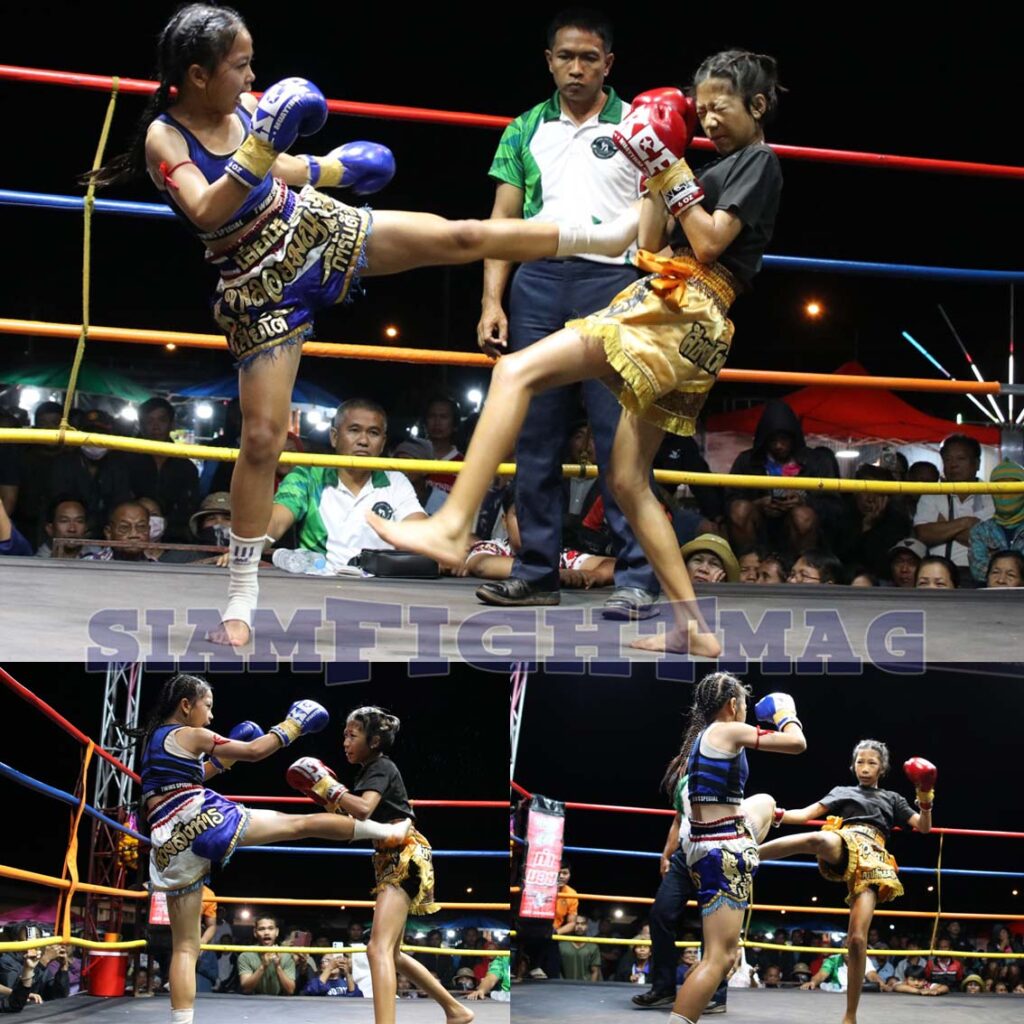
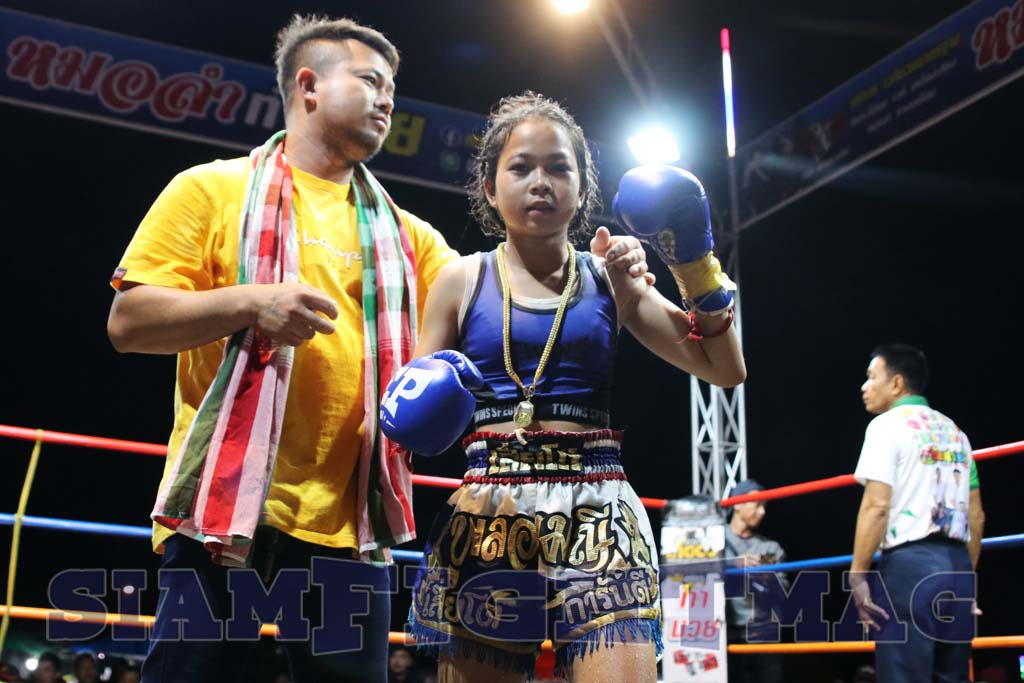
It’s often in these types of rural boxing venues, modest and rooted in the Thai countryside, that young boxers gain their experience. Far from the spotlight of big cities, these makeshift rings become the cradle of future legends. Here, the seeds of champions are born, those who, perhaps one day, will step onto the prestigious rings of Bangkok’s great stadiums.
Many stars from Ubon Ratchathani province have followed this same path, climbing the ladder one by one through sweat, courage and fierce battles.
Among them: Fasai Taweechai, voted best boxer of the year in 1970; Nungubon Sitlerchai, Lumpinee champion in four different categories; Orono Por Muangubon, Lumpinee champion and best boxer of the year in 1994; Neungtrakarn Por Muang Ubon, who became world champion; Superlek Sor Isaan, also a Lumpinee champion; Lamnamoon Sor Sumalee, four-time Lumpinee champion; and Posay Tweechai, Rajadamnern champion.
These figures still inspire young fighters today, who dream of following in their footsteps, from the dusty rings of the countryside to the grandest arenas of the Kingdom of Siam!
